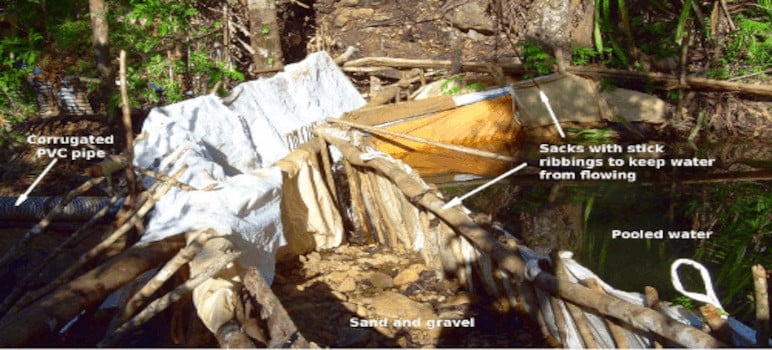Table of Contents
Today’s technology can reach even remote places and change the way of life of indigenous peoples living in isolation—a cultural diffusion example. This article describes a cultural diffusion example and acculturation in Sitio Bohoy, a remote place where once G-string clad Palaw’ans reside.
I never expected to see a trace of technological adoption — a mini-hydropower plant made of indigenous materials — in a very isolated place like Sitio Bohoy in the far-south of Palawan Island in the Philippines two years back. It took our service vehicle over five hours to reach the place. More so aware of the fact that those who employ such technology belong to the indigenous people, the Palaw’ans, who were once wearing G-strings the last time I recalled seeing them.
Mini Hydro by IPs as Cultural Diffusion Example
Boyet, a member of the Palaw’an tribe, came up with his own version of the mini hydropower plant to provide electrical power to 15 houses in his community of indigenous people. He gets paid for providing electrical services, but mainly to help maintain the power source. Occasionally, the makeshift structure gets damaged during strong rains and had to be repaired.
Building a Small Dam
Together with his friends, he built a small dam in a nearby stream. The makeshift dam made use of indigenous and junk materials he could lay his hands on from the materials recovery facility (MRF) of a nearby mining company — the Rio Tuba Nickel Mining Corporation.
The makeshift mini-hydro dam (Figure 1) uses rubber strip-connected 6-inch corrugated PVC pipes at the bottom of the wall made of sand and gravel to release water, store it upstream, and generate power. The water flows through bigger pipes and narrows down to smaller pipes downstream, increasing water pressure farther downstream.

Boyet and his team joined the series of big and small pipes using rubber strips, probably from worn-out rubber tires of vehicles. A two-inch galvanized iron (GI) pipe at the end of the pipeline finally channels the strong water flow into the home made turbine attached to a generator that consequently produces electricity at the onset of darkness until 10 pm.
Occasionally, along the length of the pipeline, holes with small hoses inserted in it supply water in the adjoining rice farms and a nearby fish pond.

Is the mini hydropower plant an original invention? Of course not, but it arose through simple diffusion of technology through the power of media — the television.
How Boyet “Discovered” the Mini Hydropower Plant
When our group asked Boyet how he conceptualized the mini-hydro, he simply said, “I saw it on TV.”
His large television set, presumably one of those cheap, surplus televisions from Japan, once gets its power from a 12-volt truck battery. He has to charge the battery each time using a gasoline-powered engine or his jeepney.
On one occasion, he viewed a documentary on how a hydropower plant works. He got inspired to come up with a small one to give a more sustainable source of power to his home and the community of closely knit families.
Now, the generated electricity produced by the mini hydropower plant powers not only his television but also a karaoke in their off power grid location. This turned the once quiet nights of the community into nights of singing and merrymaking. It allowed them more time to interact with each other.
Cultural Diffusionism and Acculturation
What struck me upon seeing the makeshift mini-hydro is the influence this technology can impose on the culture of the indigenous tribe – the Palaw’an. Technology diffused to this community through the television gradually worked its way into their way of life, changing their once unique heritage of cultural mores and beliefs. This is a classic example of cultural diffusionism, defined by Titiev (1958:446) as the spread of a cultural item from its place of origin to other places.
I bring up this issue upon remembering the discussion I had with an anthropologist during one of the series of training I attended two years ago. She said that she would like to study the indigenous tribes of Palawan.
But I said, those indigenous groups no longer exist, knowing that many of them intermarried with immigrants and citing this story. She just stared at me blankly, apparently dismayed by my suggestion that her view that the indigenous group of Palaw’ans are still wearing G-strings, walk barefoot, and wide eyed to strangers still exists.
My conclusion is that the Palaw’ans have already been acculturated. Theirs is a polluted culture on the path of extinction. The group has lost their distinct identity, culturally and biologically, because of their interaction and marriage with communities in the mainstream society.
Wouldn’t you agree?
Reference
Titiev, M. (1958). Introduction to Cultural Anthropology. New York: Henry Holt and Co.
© 2013 July 6 P. A. Regoniel | updated November 5, 2022

